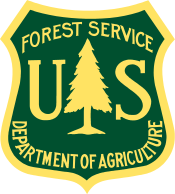Mastication and Prescribed Fire Influences on Tree Mortality and Predicted Fire Behavior in Ponderosa Pine
| Title | Mastication and Prescribed Fire Influences on Tree Mortality and Predicted Fire Behavior in Ponderosa Pine |
| Publication Type | Journal Article |
| Year of Publication | 2012 |
| Authors | Reiner, AL, Vaillant, NM, Dailey, SN |
| Journal | Western Journal of Applied Forestry |
| Volume | 27 |
| Start Page | 36 |
| Issue | 1 |
| Pagination | 6 |
| Keywords | fire behavior, fire effects and fire ecology, fuels and fuel treatments, ponderosa pine, southern Sierra Nevada, technical reports and journal articles |
| Abstract | The purpose of this study was to provide land managers with information on potential wildfire behavior and tree mortality associated with mastication and masticated/fire treatments in a plantation. Additionally, the effect of pulling fuels away from tree boles before applying fire treatment was studied in relation to tree mortality. Fuel characteristics and tree mortality data were gathered before and after treatments in a 25-year-old ponderosa pine (Pinus ponderosa C. Lawson) plantation. A random block design was used with three treatments plus a control at each of four blocks. Four plots were established as subsamples within each of the treatment and control sections of each block. Potential wildfire behavior for posttreatment fuel conditions was modeled for 90th and 97th percentile fire weather. Predicted rates of spread and flame lengths were higher for fuel conditions resulting from the mastication treatments than for the masticated/fire treatments or the controls. Torching and crowning indices indicated that higher windspeeds would be necessary to promote torching for areas treated with mastication/fire than for mastication or the controls. Tree mortality was 32 and 17% the first year after burning in masticated/fire and masticated/pull-back/fire plots, respectively, and 49 and 27% the second year. Our potential wildfire behavior results indicate that the risk of crown fire can be somewhat reduced by mastication and further reduced if mastication is followed up with prescribed fire to consume surface fuels. However, moderate levels of tree mortality seem inevitable when burning masticated fuels in a plantation and may only marginally be reduced by pulling fuels away from tree boles, which increases treatment costs. |
| URL | http://www.ingentaconnect.com/content/saf/wjaf/2012/00000027/00000001/art00006 |




